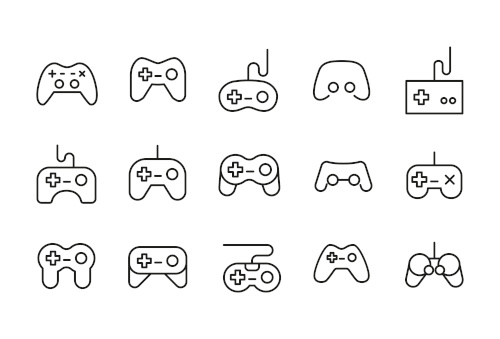Digital learning has become a significant part of education as a result of the pandemic, and schools are continually finding innovative ways to engage and motivate students online. So, with Ofcom revealing six in ten children played games online in 2021, what might the use of video gaming in the classroom look like to engage students with a model they’re already invested in?
Historically, gaming has been associated with recreational activities rather than as a medium used to boost the diversity of learning techniques, despite it being an actual benefit to a child’s literacy, empathy and imagination.
The question is: Does gaming have a viable role to play right now, as digital learning continues to claw its way to the forefront of education, or is it simply an unwelcome distraction?
The impact
From toddler to teenager, the rich and vivid environments of video games can clearly command the attention of children at all ages. However, it’s important to assess the extent to which video game technology can impact childhood education. One thing that is clear is that students enjoy this approach to learning.
Very few games on the commercial market typically have pure educational value, although evidence suggests that important skills may be built or even reinforced by video games. According to commissioned research, 77% (UK) and 81% (US) of parents viewed gaming as having a positive impact on their children’s learning. In addition, in the next five years, 55% (UK) and 60% (US) of parents expect VR and social gaming to be the technology that will shape learning in the future.
This research shows that video games are expected to have a substantial impact and an increased role in how children will learn in the years to come. However, the practical implications of this, such as a lack of a wireless connection at home or issues surrounding cost, are varied.
From a parent’s perspective, over-exposure to gaming and excessive screen time has been an ongoing concern for many. Likewise, many schools have been slow to introduce play-based learning into traditional classroom-based lesson structures due to fears that it could distract and damage concentration.
Today, the reality is very different. Educational institutions are becoming far more used to using fit for purpose technology, not only to advance access to learning for all, but also to bring a new dimension to the classroom. Due to the pandemic, remote learning methods were employed at an unprecedented rate and, as such, previously frowned-upon methods are being accepted as general practice.
Gaming has the potential to become a great educational tool in the right context and environment. Teaching a healthier and more academic approach to video gaming is also important to maximize the opportunities for learning.
Benefits of implementation
Implemented in the correct way, gaming can help to hone and nurture multiple transferable skills, from problem-solving to literacy and technical ability. Schools are well aware that happiness usually results in enhanced academic attainment and most digital gaming platforms – whether console-based gaming or gamified learning experiences – work on tried and tested methods in the form of challenges, rewards, recognition and overall progression.
From that perspective, gaming could be used to help students think more laterally and with more agility. Of course, different games stimulate responses in alternative ways and it is extremely important that schools are very mindful of this and choose the correct type of games to implement a positive learning experience. Video games have been used in comprehensive programs to help develop social skills in children and adolescents who have severe developmental problems such as autism. Gaming can provide the visual patterns, speed, and storyline that can massively help to enhance children’s basic skills.
Teachers have had multiple challenges to overcome over the past years. Teachers in both the UK and US cited the ability to meet the individual needs of each child and being overwhelmed by the pandemic as the top two challenges from the pandemic. Following this, they also found engagement with the children as a top four challenge, alongside the protection and safety of children.
Furthermore, as learning, attendance and behavioral gaps still need to be resolved following the pandemic, gaming could act as a fresh solution to inform educational strategy as schools look to recover back to full health. What’s interesting is that more parents saw gaming as having a specifically positive impact on their children’s education compared to teachers, particularly when it came to creativity, problem solving and engagement rates. Games that embed learning through play, while still reflecting the curriculum, lift the weight off teachers and make it easier for them to mimic the environments children are already familiar with in their personal time.
- 4 ways to encourage play in education - April 25, 2024
- CoSN IT Leader Spotlight: Lisa Higgins - April 25, 2024
- It’s time to pay student teachers - April 25, 2024


